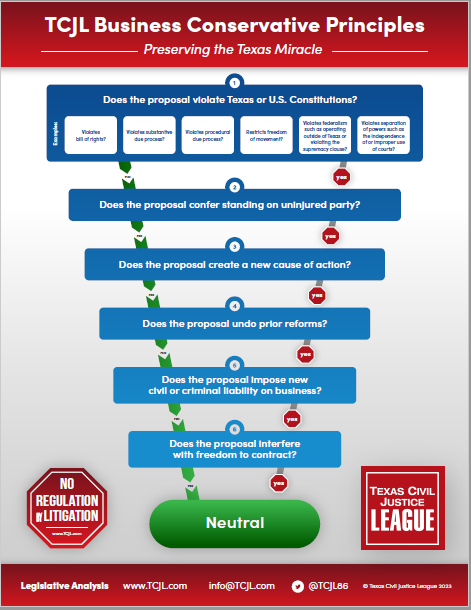 The Texas Supreme Court has affirmed an Amarillo Court of Appeals decision upholding the common law requirement that an insurer seeking to deny coverage under an insurance policy plead and prove that the insured intentionally misrepresented material information on an insurance application.
The Texas Supreme Court has affirmed an Amarillo Court of Appeals decision upholding the common law requirement that an insurer seeking to deny coverage under an insurance policy plead and prove that the insured intentionally misrepresented material information on an insurance application.
American National Insurance Company v. Bertha Arce, Individually and as Representative of All Others Similarly Situated (No. 21-0843; delivered April 28, 2023) arose from the insurer’s denial of a claim under a life insurance policy issued to the insured shortly before his death in an automobile accident. In his application for the policy, the insured answered “no” when asked about diagnoses, treatment, or medical advice for “any disease or abnormality of the stomach, intestines, rectum, pancreas, or liver.” When the insured’s beneficiary filed the claim, the insurer’s adjuster, following a review of the insured’s medical records, determined that the insured had incorrectly answered the question and denied the claim, explaining that the insurer would not have issued the policy had the insured answered correctly. The beneficiary sued for policy benefits, statutory penalties, and attorney’s fees, alleging breach of contract and violations of the Insurance Code. She later added class claims. The insurer filed a motion for summary judgment based on § 705.051, Insurance Code, which it argued allowed it to rescind the policy. The trial court granted the motion and rendered a take-nothing judgment rescinding the policy. The court of appeals reversed and remanded to the trial court, holding that the common law scienter requirement applied.
In an opinion by Justice Devine, the Court reaffirmed its longstanding adherence to the common law rule that the insurer must plead and prove intent to deceive. At issue was whether § 705.051, which has been on the books for well over a century, trumps the common law rule or may be read in concert with it. The statute provides that “[a] misrepresentation in an application for a life, accident, or health insurance policy does not defeat recovery under the policy unless the misrepresentation: (1) is of a material fact; and (2) affects the risks assumed.” In response to the insurer’s argument that the statute does not require a showing of intent, the Court held that the statute states the minimum or “necessary” conditions for rescission but not “sufficient” conditions. In other words, the statutory language that a “misrepresentation . . . does not defeat recovery . . . unless the representation” is material and affects the risks does not create a rescission defense, as it would if the language stated that the fulfillment of those two conditions “defeated” recovery. While the two conditions are “necessary” to defeat recovery, therefore, they are not the only conditions that may be imposed. Noting that the common law rule and the statute have co-existed for more than a century, the Court reasoned that the Legislature, which last amended the statute in 2003 as part of a nonsubstantive recodification, could have overridden the common law rule but did not. The Court further rejected the insurer’s argument that “judicial drift” had put Texas in a minority of jurisdictions retaining the rule.
Justice Young wrote a concurring opinion elaborating on the circumstances under which the Court would overrule its own precedent, as the insurer requested in this case. He concluded that the three elements that must be present to overcome stare decisis—efficiency, fairness, and legitimacy—were not present here. Moreover, although the Court has the authority to abrogate a common law doctrine on its own motion, it should only “overrule common-law precedent when developments external to the judicial system undermine the precedent’s vitality, as we did, for example, in Texas Mutual Insurance Co. v. Ruttiger, 381 S.W.3d 430 (Tex. 2012)” (abolishing common law action for breach of the duty of good faith and fair dealing in the workers’ compensation system). In Ruttiger, the “external developments” were legislative intervention in the workers’ compensation system. Nothing of the sort applied in this context.
The case now returns to the trial court, which will presumably determine whether the insurer’s summary judgment motion presented legally sufficient evidence of the insured’s intent to deceive. We are also curious about the class claims that apparently survive as well. But it’s difficult to imagine a successful class claim simply because evidence of “intent” will be unique and specific to each individual case.












